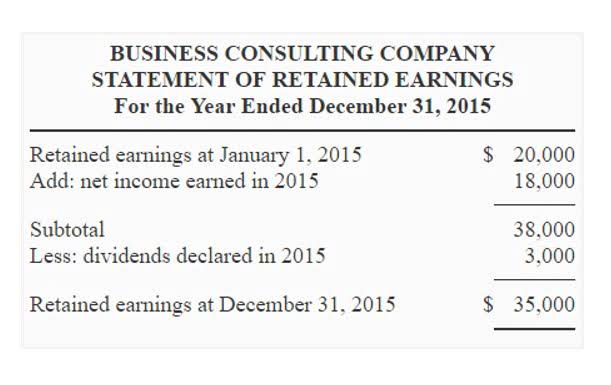Content

Singapore gained self-governance in 1959 and in 1963 became part of the new federation of Malaysia, alongside Malaya, North Borneo, and Sarawak. General and administrative costs are rarely reported separately; it’s fairly common to see these two costs reported together. The Healthy 365 sg&a meaning app – which awards points to users for taking part in physical activities and making healthier food purchases – will be enhanced to include features such as tracking of calorie intake. The points can be exchanged for public transport vouchers and rewards at participating merchants.
It is located about one degree of latitude (137 kilometres or 85 miles) north of the equator, off the southern tip of the Malay Peninsula, bordering the Strait of Malacca to the west, the Singapore Strait to the south, the South China Sea to the east, and the Straits of Johor to the north. The country’s territory comprises one main island, 63 satellite islands and islets, and one outlying islet; the combined area of these has increased by 25% since the country’s independence as a result of extensive land reclamation projects. It has the second highest population density of any country in the world, although there are numerous green and recreational spaces as a result of urban planning. With a multicultural population and in recognition of the cultural identities of the major ethnic groups within the nation, Singapore has four official languages – English, Malay, Mandarin, and Tamil. English is the lingua franca, with its exclusive use in numerous public services. Multi-racialism is enshrined in the constitution and continues to shape national policies in education, housing, and politics.
Understanding Selling, General, and Administrative Expenses (SG&A)
You can choose a payment option that works for you, pay less with a trade‑in, connect your new iPhone to your carrier, and get set up quickly. It was first registered in September 1988.[2] It is administered by the Singapore Network Information Centre.[2] Registrations are processed via accredited registrars. From zumba classes to community gardening, residents can expect more healthful activities organised by the likes of People’s Association and Sport Singapore. The resident and his doctor will come up with a health plan which will include lifestyle changes and regular check-ups. All content on this website, including dictionary, thesaurus, literature, geography, and other reference data is for informational purposes only. This information should not be considered complete, up to date, and is not intended to be used in place of a visit, consultation, or advice of a legal, medical, or any other professional.
- Its contemporary era began in 1819 when Stamford Raffles established Singapore as an entrepôt trading post of the British Empire.
- As part of its Q financial reporting, Apple reported $12.809 billion of operating expenses for the quarter.
- SINGAPORE – Healthier SG is a decisive shift in Singapore’s healthcare system which emphasises preventive care to keep people healthier.
- The Healthy 365 app – which awards points to users for taking part in physical activities and making healthier food purchases – will be enhanced to include features such as tracking of calorie intake.
- Singapore is a unitary parliamentary republic with a Westminster system of unicameral parliamentary government, and its legal system is based on common law.
- With a multicultural population and in recognition of the cultural identities of the major ethnic groups within the nation, Singapore has four official languages – English, Malay, Mandarin, and Tamil.
Some expenses such as interest expense or tax expense are reported below operating income. Selling expenses can be broken down into direct and indirect costs. Direct selling expenses are incurred only when the product is sold.
General and Administrative Expenses (G&A) in SG&A
One of the five founding members of ASEAN, Singapore is also the headquarters of the Asia-Pacific Economic Cooperation Secretariat, the Pacific Economic Cooperation Council Secretariat, and is the host city of many international conferences and events. Singapore is also a member of the United Nations, World Trade Organization, East Asia Summit, Non-Aligned Movement, and the Commonwealth of Nations. As part of its Q financial reporting, Apple reported $12.809 billion of operating expenses for the quarter.
For example, research and development costs are often not to be included in SG&A. In addition, depreciation costs are often reported in this section of the income statement but excluded from SG&A as well. When these expenses are deducted from the gross margin, the result is operating profit. It’s important to note that not all expenses have been recorded when calculating operating expenses.
How to Calculate SG&A
A company must incur many different types of costs to run a business, and many of those expenses are not directly tied to making specific products. These broad costs are classified as selling, general, and administrative costs. Reported separately from COGS, these expenses are deducted from gross margin to determine a company’s net income.

Net revenue is always reported at the top, then COGS is deducted to arrive at the gross margin. Singapore’s history dates back at least a millennium, having been a maritime emporium known as Temasek and subsequently as a major constituent part of several successive thalassocratic empires. Its contemporary era began in 1819 when Stamford Raffles established Singapore as an entrepôt trading post of the British Empire. In 1867, the colonies in Southeast Asia were reorganised and Singapore came under the direct control of Britain as part of the Straits Settlements. During World War II, Singapore was occupied by Japan in 1942, and returned to British control as a separate Crown colony following Japan’s surrender in 1945.
Management often has discretion how many of these costs are reported on the income statement in respects to how to group these types of costs. SG&A is both critical to the success of a business and vulnerable to cost-cutting. Cutting the cost of goods sold (COGS) can be tough to do without damaging the quality of the product.
COGS includes the expenses necessary to manufacture a product including the labor, materials, and overhead expenses. SG&A costs are the residual expenses necessary to run the organization and incur costs less specifically tied to the cost of making the product. In many instances, SG&A expenses and operating expenses are one and the same. Both encompass the expenses necessary to operate a business independent of the costs to manufacture goods. Companies may aggregate all of these expenses in a single SG&A line, or it may segregate selling costs from general and administrative costs.
For example, companies are often required to maintain insurance and may find it impossible to operate without incurring a cost of maintain its headquarters. SG&A plays a key role in a company’s profitability and the calculation of its break-even point. SG&A is also one of the first places managers look to when reducing redundancies after mergers or acquisitions. That makes it an easy target for a management team looking to quickly boost profits. SINGAPORE – Healthier SG is a decisive shift in Singapore’s healthcare system which emphasises preventive care to keep people healthier.




